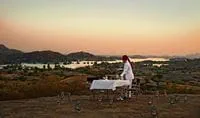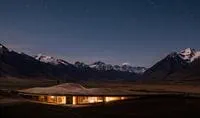Destination guide: Pollenca & Puerto Pollenca
Pollença (often spelt Pollensa in English speaking countries to mirror the pronunciation) is an historical and charming old Mallorcan market town at the foot of the Tramantuna mountain range. Small enough to walk round in a morning, it’s the perfect place to sit in one of the many cafes and watch local life go by.

One of the best days to visit is Sunday, when its traditional market takes over the main square, the Placa Major. Stalls full of fresh local produce (tempting even though you’re probably not spending your week near a cooker) and artisan products such as jewelry, baskets and art. You’ll also find a myriad of little boutiques and shops selling locally crafted goods, from ceramics to interior decorations.
Just a couple of miles from the old town of Pollenca is the town of Puerto Pollenca – a low key family friendly resort with lovely beaches, shady waterfront promenades and spectacular surrounds. The backdrop of the Tramuntana Mountains can be seen from the entire town, and its sheltered position means it’s protected from any prevailing winds. The pine fringed Albercutz (Voramar) beach, and south of the marina, Pollenca beach, are both wide and sandy, with crystal clear, calm waters. Fincas, whitewashed houses and some of the most impressive villas in Mallorca are tucked up behind the beaches overlooking the bay and marina. Once a fishing village, the bay still has traditional fishing boats moored alongside leisure boats.
Attractions
Every year, Pollenca holds ones of the most popular festivals in Mallorca – La Patrona. Typically held at the end of July and beginning of August, it culminates in a mock battle between the Moors and the Christians – the Mares de Deu dels Angels, with a fabulous firework display at the end. Throughout the week there are music concerts, children’s entertainment, exhibitions and markets. If you’re not around during that week, you won’t miss out however. The town is always celebrating one fiesta or another.
Activities
Pollenca is very popular with walkers and cyclists. Many pro-cycling teams come to this part of Mallorca for training, as the terrain is perfect. However, if you prefer a more sedate pace, there are plenty of walking trails, all of which will reward you with spectacular views. You have a very good choice of coastal paths, as well as trails into the foothills of the Tramuntana Mountains. A rewarding walk will take you towards the Cap de Formentor on the northwest coast, along the Cami Vell del Far (old road to the lighthouse).
In Puerto Pollenca sun loungers and parasols can be rented for relatively little, along the beach and as the bay is sheltered from the wind and large waves, the calm waters are ideal for swimming, kayaking or hiring a pedalo. You can even get a pedalo with a slide attached! The more adventurous can parasail, banana boat or even scuba dive – there are many diving excursions during the summer along the rocks of the coastline. For sailors, there are plenty of places to charter larger boats, although prior booking would be advisable.
For a further choice of beaches, it’s worth heading to Cala San Vicente, northeast on the opposite side of the peninsular, where you’ll find three picturesque sandy coves. Built on a cliff edge, the village has spectacular views of the coastline and Mediterranean. Cala Barques is the main beach here, and is easily accessible from the car park (which can get quite busy in the summer). Further round is Cala Molins which, due to its unbelievably clear waters, is ideal for snorkeling. Kayaking around the cliffs from here is also a popular activity. There are a few restaurants, bars and shops, as well as sun beds and beach umbrellas on the beach and pedalos to hire. Further around the coastline is the pebbly Cala Cabro, where you’ll find yourself sharing it with local fishermen.
Cuisine
During the summer, the main square, the Placa Major buzzes every day of the week, with locals stopping for a coffee or tapas, and joining in the passeo (evening walkabout). If you happen to be passing, try the tapas at Club Pollenca, which is popular with the locals, or Manzanas y Peras which has a good reputation for well-priced tapas. For a gastronomic treat, then make a booking at 3/65, the gourment restaurant of the Hotel Son Brull, at the foot of Maria de Puig.
There are plenty of good places to eat in Puerto Pollenca. For a leisurely lunch overlooking the sea, C’an Josep serves traditional Spanish cuisine, while La Llonja in the harbor specializes in fish and Mallorcan cuisine. The market in Puerto Pollenca is held every Wednesday morning, selling fruit and vegetables.
History
The Romans settled in Pollenca over 2000 years ago, and you can see remains of their presence in the town and surroundings. The stone bridge over the Torrent de San Jordi was built around AD120, and is a popular site to see. The Museo de Pollenca is a good place to visit to see a collection of archeological finds, paintings and sacred art. It is housed in the cloisters of the convent of Sant Domingo, which also hosts Pollenca’s classical music concert and art fair. The town has a medieval feeling to it, with its narrow and winding cobbled streets, and you’ll find it spotlessly clean. One of the most dominant features is the 13th century Esglesia de Nostra Senyora dels Angels (Our Lady of the Angels), which was built by the Knights Templar, and has a magnificent rose window. Just north of the Placa Major is a 365 set of steps to a chapel on top of the hill, known as Calvari. Every Good Friday the locals join in a procession to the top for a mock crucifixion. The far reaching views from the top make the climb worthwhile. You’ll be rewarded with the Puig de Maria, the Bay of Pollenca and the plains of Mallorca. The Puig de Maria (or Puig de Pollenca) is a small hill with an ancient hermit nun’s monastery at the top, which can be reached on foot via a narrow lane. The last nuns left in 1988, and like all good climbs, there is now a bar and restaurant waiting for you at the top!
Call us on 212 372 7009 to start planning your vacation
Why Scott Dunn?
Unique to You

- We listen to your travel goals and craft unique trips that are personalized to you.
- We’re with you every step of your life’s travel journey, from honeymoons to family trips and beyond.
Seamless Service

- Global offices in the UK, US, and Singapore for 24/7 seamless service.
- We offer flexibility if your plans change so you can book with confidence and peace of mind.
Carefully Curated Collection

- We’ve curated an elevated collection of accommodation, experiences, and guides.
- Committed to fostering close global relationships to continue bringing you unique experiences.
Luxury in Every Sense

- We deliver a sense of luxury that matters most to you.
- Awarded Condé Nast Traveler’s Top Travel Specialists in the World 12 years in a row.



